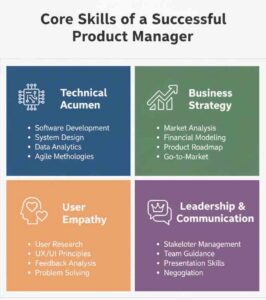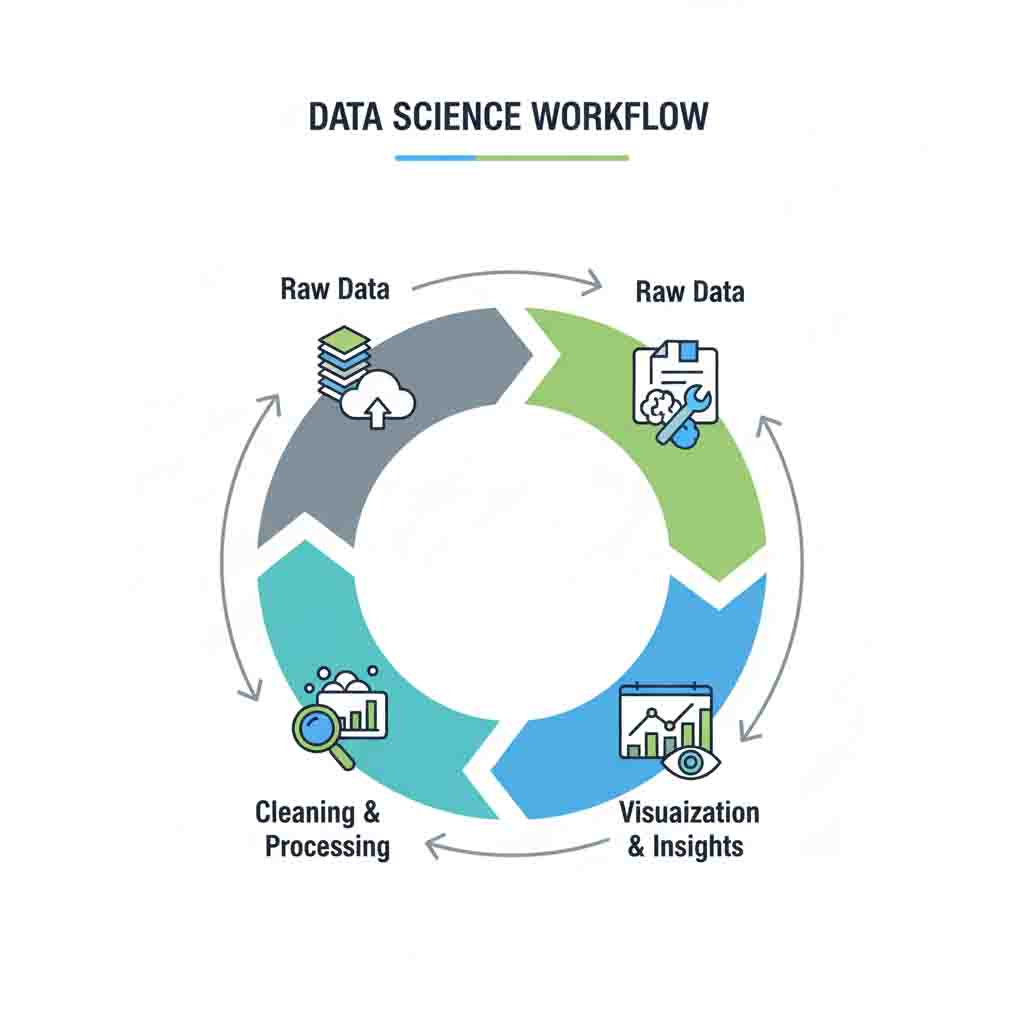Career Overview
A Product Manager serves as a critical bridge between business, technology, and user experience in the digital era. Essentially, they act as the “CEO” of a product, defining its vision and guiding cross-functional teams to bring that vision to life.
Within the U.S. professional culture, this role is particularly vital. American companies highly value the Product Manager’s comprehensive skill set, which includes problem-solving abilities, technical knowledge, communication skills, leadership, and teamwork. This position demands not only strong technical capabilities but also exceptional soft skills to align diverse stakeholders and resources.
Daily Work & Key Responsibilities
The day-to-day work of a Product Manager is dynamic and multifaceted, centered around several core responsibilities:
-
Defining Product Vision & Strategy: Collaborating closely with executives, engineers, designers, and marketing teams to establish and communicate a clear product vision and roadmap.
-
Prioritization & Decision-Making: Determining the development priority of product features based on user needs, business objectives, and market data to ensure team resources are allocated to the highest-value initiatives.
-
Leading Cross-Functional Teams: While not always a formal manager, the Product Manager leads a team of engineers, designers, data analysts, and others to drive product development forward.
-
Gathering & Analyzing Feedback: Continuously collecting input from users, sales, marketing, and other channels, and combining this with data analysis to generate actionable product insights and guide improvements.
Core Skills for Success
A successful Product Manager needs a balanced combination of hard and soft skills:
Technical Skills
-
Foundational Technical Understanding: Knowledge of basic software development and design principles to enable effective communication with engineers and designers.
-
Data Analysis Proficiency: Ability to use data analysis tools to identify issues, evaluate outcomes, and inform decisions.
-
Market & User Research: Expertise in employing various research methods to gain a deep understanding of user behavior and market needs.
Soft Skills
-
Communication & Collaboration: The ability to clearly articulate product concepts to diverse audiences is one of the most crucial soft skills for a Product Manager.
-
Leadership & Influence: Skill in motivating teams and advancing projects through personal influence, even without direct formal authority. U.S. companies place significant emphasis on leadership ability and teamwork.
-
Critical Thinking & Problem-Solving: Capability to navigate complex and ambiguous situations, identify root causes of problems, and develop effective solutions. Problem-solving is consistently ranked among the top skills valued by U.S. employers.

Career Path & Outlook
The typical career progression for a Product Manager is both clear and promising:
-
Entry-Level: Associate Product Manager or Product Specialist.
-
Mid-Level: Product Manager, independently overseeing a product line or major feature module.
-
Senior-Level: Senior Product Manager or Product Director, responsible for a full product line or a larger product portfolio.
-
Leadership: Vice President of Product or Chief Product Officer, overseeing the company’s overall product strategy.
With the ongoing depth of digital transformation, demand for skilled Product Managers remains strong. This role is highly valued within tech companies, offering competitive compensation and significant opportunities for career advancement.
How to Become a Product Manager
-
Build an Educational Foundation: A bachelor’s degree is typically required. Backgrounds in business, computer science, engineering, or design are particularly advantageous.
-
Gain Practical Experience:
-
Start in related roles such as Business Analyst, Software Developer, or UX Designer.
-
Proactively take on responsibilities related to product planning and project management in your work.
-
Create a detailed Product Requirements Document (PRD) or prototype for a product area you are passionate about.
-
-
Develop Your Skill Set: Consciously cultivate the technical and soft skills mentioned above.
-
Network Actively: Attend industry conferences, connect with other product professionals, and seek out mentorship.
Official Data Source: U.S. Bureau of Labor Statistics


